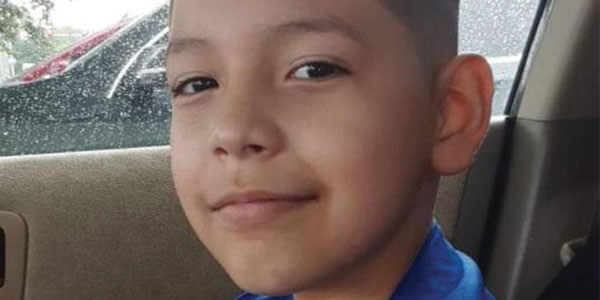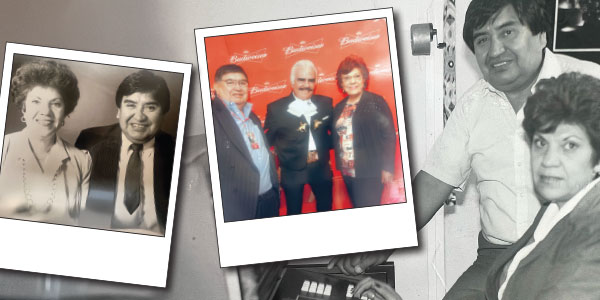
By Angie Baldelomar
Maria Orona’s life was forever changed when her 9-year-old son, Ramon, was diagnosed with type 1 diabetes.
Almost three months ago, Ramon lost 30 pounds in a month. Orona noticed he drank a 24-pack of water within two days. He also was having trouble sleeping. She took her son to his doctor.
“At first, I thought he had worms because he got so skinny,” she recalled. “I took him to his doctor and they drew blood. The next day, they called me and told me it was really serious and if he doesn’t get to a hospital right now, he’ll end up in the hospital for a long time. His pancreas gave out.”
Ramon was diagnosed with type 1 diabetes. His life and Orona’s life changed.
Type 1 diabetes is a chronic condition in which the pancreas produces little or no insulin — the hormone needed to allow sugar (glucose) to enter the body’s cells and produce energy. It is hereditary and usually appears during childhood or adolescence, though it can develop in adults, too. It has no cure. But it can be treated and managed with insulin, dietary and lifestyle changes.
Unlike type 2 diabetes, type 1 requires a constant monitoring of blood sugar levels.
“He has to use two pens to poke himself with for the rest of his life. If he doesn’t have it, he won’t survive,” Orona said. “He has to check his blood, and it’s really overwhelming because if he doesn’t have his strip to check his blood, it can be either too high or too low.”
Something her son struggled with at first was that he could no longer eat whatever he wanted. That was “the main thing that took him off guard,” Orona said.
“It does suck because he has to count his carbs,” she said.
To do that, her son needs to poke himself before eating and make sure his blood sugar levels remain at a normal rate. Within a month, Ramon already knew how to do those things on his own, Orona recalled.
“I’m really proud of him because I told him that he has diabetes for the rest of his life, so eventually, he’d have to poke himself and do everything that I was doing on his own, and I didn’t expect for him to do it on his own so quickly,” she said.
The boy not only knows how to check his blood, but also how to give himself his insulin.
Because of how common this type of diabetes seems to be, Orona is surprised by how expensive it is. They had run out of the test strips used to test blood sugar levels twice because insurance only covers 200 of them, but Ramon goes through between 400 and 500 strips a month. He uses about seven strips a day.
Orona did not know about type 1 diabetes before his son’s diagnosis. She wants other people to be aware of it.
“I think what I would want people to be aware of about is that there’s more than one type of diabetes and I think people should know the difference,” Orona said.
To find more information about type 1 diabetes, visit https://www.diabetes.org/diabetes/type-1.
_________________________________________________________________________
Madre comparte su experiencia con el diagnóstico de diabetes tipo 1 de su hijo
La vida de María Orona cambió para siempre cuando a su hijo de 9 años, Ramón, le diagnosticaron diabetes tipo 1.
Hace casi tres meses, Ramón perdió 30 libras en un mes. Orona notó que bebió 24 paquetes de agua en dos días. También tenía problemas para dormir. Así que llevó a su hijo a su médico.
“Al principio, pensé que tenía gusanos porque se puso muy delgado”, recuerda. “Lo llevé a su médico y le sacaron sangre. Al día siguiente, me llamaron y me dijeron que era muy grave y que si no llega al hospital en este momento, terminará en el hospital durante mucho tiempo. Su páncreas dejó de funcionar”.
A Ramón le diagnosticaron diabetes tipo 1. Su vida y la de Orona cambiaron.
La diabetes tipo 1 es una afección crónica en la que el páncreas produce poca o ninguna insulina, la hormona necesaria para permitir que el azúcar (glucosa) ingrese a las células del cuerpo y produzca energía. Es hereditario y suele aparecer durante la infancia o la adolescencia, aunque también puede desarrollarse en adultos. No tiene cura. Pero se puede tratar y manejar con insulina, cambios en la dieta y el estilo de vida.
A diferencia de la diabetes tipo 2, la tipo 1 requiere un control constante de los niveles de azúcar en sangre.
“Tiene que usar dos dispositivos para pincharse por el resto de su vida. Si no lo tiene, no sobrevivirá ”, dijo Orona. “Tiene que controlar su sangre, y es realmente abrumador porque si no tiene su tira para revisar sus niveles de azúcar en la sangre, ésta puede ser demasiado alta o demasiado baja”.
Algo con lo que su hijo tuvo dificultades al principio fue que ya no podía comer lo que quisiera. Eso fue “lo principal que lo tomó por sorpresa”, dijo Orona.
“Es dificil porque tiene que contar sus carbohidratos”, dijo.
Para hacer eso, su hijo necesita pincharse antes de comer y asegurarse de que sus niveles de azúcar en sangre se mantengan a un ritmo normal. En un mes, Ramón ya sabía cómo hacer esas cosas por su cuenta, recordó Orona.
“Estoy muy orgullosa de él porque le dije que tendrá diabetes por el resto de su vida, así que eventualmente, tendría que pincharse y hacer todo lo que estaba haciendo por su cuenta, y no esperaba que él lo hiciera por su cuenta tan rápido”, dijo.
El niño no sólo sabe cómo controlar su sangre, sino también cómo administrarse la insulina.
Debido a lo común que parece ser este tipo de diabetes, Orona se sorprende de lo costosa que es. Se habían quedado sin las tiras reactivas que se usaban para medir los niveles de azúcar en sangre dos veces porque el seguro sólo cubre 200 de ellas, pero Ramón utiliza entre 400 y 500 tiras al mes. Usa unas siete tiras al día.
Orona no sabía nada sobre la diabetes tipo 1 antes del diagnóstico de su hijo. Quiere que otras personas lo sepan.
“Creo que lo que me gustaría que la gente supiera es que hay más de un tipo de diabetes y creo que la gente debería saber la diferencia”, dijo Orona.
Para encontrar más información sobre la diabetes tipo 1, visite https://www.diabetes.org/diabetes/type-1.









